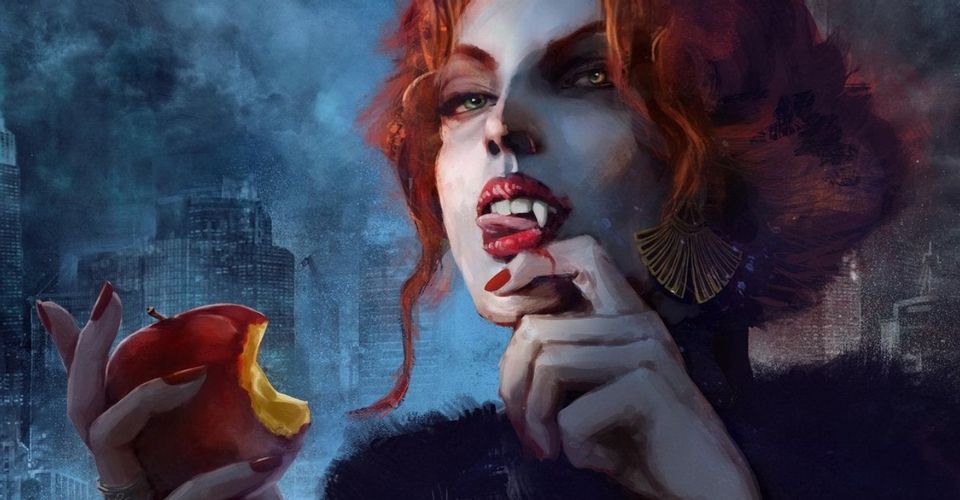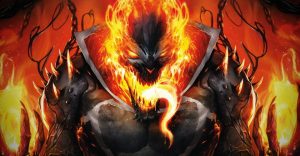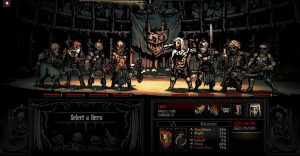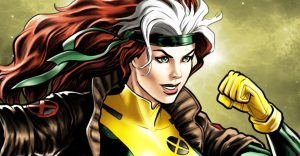How Vampires Work in Vampire: The Masquerade – Bloodlines 2

To no one’s surprise, the upcoming action-horror RPG Vampire: The Masquerade – Bloodlines 2 is pretty vampire-centric, revolving around the antics of a newly-transformed vampire as he tries to navigate the cutthroat politics of Seattle’s secret Vampire society and figure out who exactly turned them into a blood-drinking monster. Nearly every book, movie, or game about vampires tries to put their own spin on the Vampire legend, and Vampire: The Masquerade – Bloodlines 2 is no different, introducing a variety of different Vampire Clans with abilities and banes that embody different cultural archetypes of the Undead.
What is a vampire, exactly? In most monster stories and tales of folklore, vampire are undead, un-aging supernatural creature who drink the blood of the living. Outside of this general criteria, a vampire can take any form, from the Eastern European “Dracula” archetype to odder creatures like the Chinese Jiangshi (a moldy hopping corpse that drains life force) or the Filipino legend of the Aswang (a shapeshifting witch with a long proboscis). Vampires can also be metaphors for various social ills and dangers, ranging from plague and sexual predation to aristocratic tyranny and addiction.
Because vampires are such a flexible horror concept, storytellers and creatives love to create their own custom ‘rules’ for vampires, adding or subtracting powers, features, and weaknesses in order to tell the sort of vampire story they want. To certain degree, the developers of the original Vampire: The Masquerade tabletop RPG did the same thing, cherry-picking certain bit of vampire folklore to create a type of vampire that can blend in with humans in urban environments and look good in black trench coats while still being tormented by their immortality and inhuman appetites. At the same time, the character creation rules offered in both the tabletop and video game versions of Vampire: The Masquerade empower players to tell their own vampires story by creating creatures with unique combinations of cruel abilities and cursed afflictions.
VTM Vampires – Basic Biology And Strengths

In the World of Darkness setting where the Vampire: The Masquerade and other games like Werewolf: The Apocalypse take place, vampires, who refer to themselves somewhat pretentiously as “the Kindred,” are created when a vampire drains the lifeblood of a human, then feed them some of their own vampiric blood. The average vampire is stronger and more resilient than the average human, thanks to their ability to consume their own blood to enhance their physical abilities and heal their injuries (represented in the games by spending points of “Vitae”).
With some exceptions, a vampire’s body is fixed in appearance from the moment of their ‘Embrace,’ making them functionally immortal as long as they drink blood regularly. They can even grant a more limited form of immortality by regularly feeding humans and animals drops of their own (addictive) blood (a common tactic used to create half-vampiric servants called Ghouls). As of the 5th edition of Vampire the Masquerade, vampires also absorb emotions from the blood of creatures they drink, forcing them to be picky about their targets if they want to have a ‘balanced diet’ and a stable psyche.
VTM Vampires – Their Vulnerabilities

Classic European folklore vampires – Dracula being the classic example – have oodles of weaknesses: stakes, garlic, silver, holy symbols, sunlight, fire, piles of seeds they’re compelled to stop and count. The developers of Vampire: The Masquerade chose to pare the vulnerabilities of their vampires down to three primary weaknesses: sunlight, which burns them to a crisp, fire, which keep them from regenerating, and stakes to the heart, which paralyze them until they’re removed. In rare cases, a human with earnest, saintly devotion to a religion or cause can repel or even injure vampires with the power of their True Faith.
The true weakness of vampires in Vampire: The Masquerade, however, is arguably also the source of their greatest strength: blood. Vampires need to drink blood on a regular basis to fuel their bodies and sate their beastly instincts, but not so much that they lose their humanity and degenerate into feral blood junkies. Their constant need for a stable source of blood also leads vampires into conflict with other beings, ranging from other vampires fighting over access to “hunting grounds,” or human vampire hunters who take exception to being treated as cattle.
VTM Vampires: Their Various Clans

Vampires in Vampire: The Masquerade Bloodlines 2 come in different Clans – subspecies of vampires which specialize in different powers and embody different archetypes of vampires. The Ventrue and Toreador Clans, for instance, represent the vampire archetypes of “mind-controlling overlord” and “inhumanely beautiful sex god,” while clans like the Gangrel and Nosferatu represent more inhuman, animalistic vampires, less able to blend in with civilized society. A player who wants to create a character modeled after their favorite fictional vampire can chose the Clan that best fits their concept, then flesh their PC out with the right mix of backstory, skills, and vampire superpowers
VTM Vampires – Their Unique Disciplines

Much as vampire clans in Vampire: The Masquerade Bloodlines 2 represent vampire archetypes, the Disciplines in V:tM represent the different abilities ascribed to vampires in different legends across the world, each one fueled by the blood they crave. The Animalism Discipline, for instance, lets players control animals, while Protean lets them transform into them. The Celerity and Fortitude disciplines grant a vampire super speed and strength, respectively, while Dominate is the classic “look into my eyes” vampire hypnotism abilities. Certain clans possess unique signature disciplines, such as the Tremere’s blood-manipulating Thaumaturgy or the Malkavian’s ability to infect victims with their own tragic symptoms of insanity.
The huge variety of character customization options in Vampires: The Masquerade Bloodlines 2 and other Vampire: The Masquerade games actually goes a long way to justify the contradictory nature of vampire stories across the world by illustrating how each vampire is a unique existence; be they sinister seducers, sewer-dwelling outcasts, sinister manipulators, or inhuman beasts, those who drink blood, live forever, and cleave to a Masquerade can call themselves one of the undying Kindred.
About The Author

















